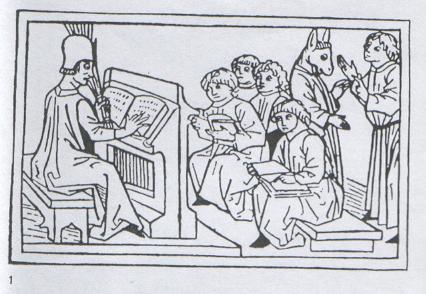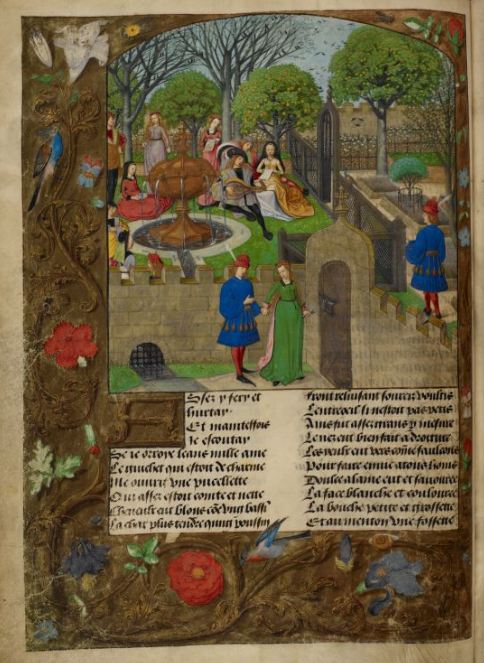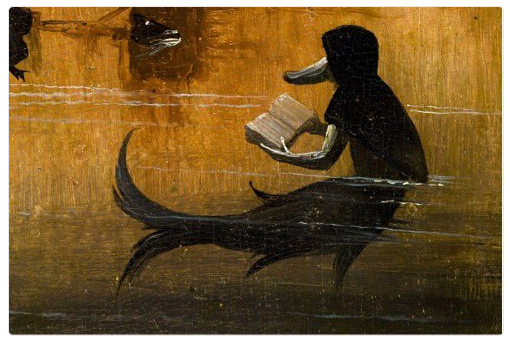GRAMMAR

TUESDAY & THURSDAY
- The Romance of the Rose and its structure (spoiler: it’s a rose) and outer frame:
- A unified and universal grammar of love
- Or, what’s next after an arts education and how is it liberal or liberating?
- Grammar in/of the Rose:
- Marvellousness, a foreign world, and learning its foreign language
—“allegory”: @DamienKempf, 2016-09-26
—“medieval selfie”: @erik_kwakkel, 2016-09-27
—”reading” via @SLevelt, 2016-04-07 - How to make sense of individual words, how to assemble them coherently into sense, senses of the word “sense”
- How to read (remembering this is a dream, and will include topsy-turvy dream-sense)
- Reading the Rose: some useful ways to use the Roman de la Rose Digital Library
(see also: reading guides in Resources > Romance of the Rose)
—Navigating by narrative section
—Navigating by illustration
NB: on Chrome, this works better; on Firefox and Safari, the link is often to the two pages just before (just click the › button to get to the next page)
—Note that illustrations and other decoration form as important a part of the book as a whole—and are as important to making sense of it—as do words
- Marvellousness, a foreign world, and learning its foreign language
- Reading: Reason and Fortune (Roman de la Rose 46-48, 64-110):
- I will do a close-reading of at least one passage from this week’s reading, in live action: please bring your text, whether you have already read this week’s reading or not!
- One main online manuscript I’ll be using for images to accompany readings this week: British Library Harley MS 4425
—Description
—Virtual book
—Note that, at its beginning, this manuscript has something resembling modern-style “Contents”; and the red rubrication beside each illustration helps to guide and situation a reader, and to structure reading
—Modern parallel: your Rose printed book is in prose and divided into chapters, so as to look and feel like a contemporary novel - Multiple-version reading of a textual multiverse: how other manuscripts have chosen to illuminate this section of the text, how each of these constitutes a reading of the Rose:
The very beginning…
Reason (1)
Reason (2)
friendship & giving & here
Fortune’s wheel
Giving too much & here
Fortune’s seductions, & its consequences: think enslavement vs liberty/liberation
Virginius, more, & more
READING Fortune’s residence:
—compare especially these two (Morgan 948 f. 61r and Arras 897 f. 34v) illustrations’ attempts to depict what is happening
on p. 90-94, perhaps the most superficially coherent part of Reason’s speech and around the structural midpoint of her section
—simpler artistic decisions: Bibliothèque Nationale de France fr 12595 f.45 and Getty Ludwig XV 7 f. 38v
—and the compositionally simple but curiously surreal Bodleian Douce 195 f. 43r
Followed by exempla (and note the manuscript decisions and tastes in what to depict and how: this will not necessarily agree with contemporary sensibilities):
Nero, more (feat. Seneca), and more Nero, and the last of him
Croesus & dream-interpretation/-reading
Charles & Manfred (a contemporary real-world example)
Double-barreled Fortune
Reason & the Lover: the end
- Topic (Tuesday-Thursday): Perfect harmony and marvellous mystical marriages (2): the marvellous
- Creative hybridity, monsters, conversion, compilation, confluence:
—In an alien universe that is a different—in culture, mentality, perception, outlook—as any other strange other place, time, or world in which you/we are newcomer outsiders;
—like encountering and exploring any other imaginary world, including 20th-21st c. speculative fiction: games, science-fiction films & TV, graphic novels, CosPlay
—yet a world that’s as fundamentally human, curious, questing for understanding, loving a good story, and with the other usual appetites - Ideas of translatio :
—”Translation” in narrow and broad senses & translatio studii et imperii
—See also: O’Brien field-trip slides from week 2, shown in week 3 Thursday class - Books, form, genre, literariness:
—A literary history and aethetics that isn’t just one of tidy works and genres (individual independent free-standing works, short lyric poem, short story, novel, comedy, tragedy)
—A literary world of inter-textual cross-reference in which every book is also part of a larger whole; think libraries and labyrinths, networked systems and ecosystems
—And hybrid works that don’t look like our 2016 expected categorisations of different kinds of writing
—Ex. short stories collected within what looks like a non-fiction treatise, a long narrative that looks like a proto-novel but is in verse and seems to have no plot, a work that is itself a compilation or collection (parallel: many of the books that contained some Martianus Capella; libraries containing many books; Umberto Eco, The Name of the Rose; Jorge Luis Borges, Fictions) - Romance as a hybrid monstrous marvellous form of literature:
—Remember the symbolism of Philology and Mercury, the role of the latter as representing transmission and interpretation, leading to meaning: but neither of the two individuals in that couple is meaning itself—full sense, complete knowledge—which is over to readers and their reading work. That is one possible explanation (there are others) for their Marriage looking like it lacks an ending…
—Examples of precursor hybrids in form and content: Ovid Heroides, Apuleius Golden Ass / Metamorphoses, the prosimetrum ex. Boethius Consolation of Philosophy, Bernardus Silvestris Cosmographia, the letters of Abelard & Héloise, Andreas Capellanus On Love, French (and other later) romance (= translation again, including the linguistic one of reworking & transforming Latin material into a Romance-language-group vernacular)
—See also: mini-Wikipedia “Who’s Who in this Weird and Wonderful World“ - Marvellousness and the dream-vision:
—Examples from the contemporary cultural context (and earlier and later, depending on what comes to student minds)
—Example in the Rose: Croesus and Phania; Cicero and Macrobius; more in week 7 (arithmetic & the mid-point of the course)
- Creative hybridity, monsters, conversion, compilation, confluence:

British Library Harley MS 4425,
f. 14v (1490s)
THURSDAY
- Presentation: GRAMMAR
- Slow-motion video of a rose blooming, with (in)appropriate sound-track
- labyrinths: ex. Chartres Cathedral floor
- labyrinths vs gardens of forking paths: adventures, pilgrimages, making sense of a world (including having choices and making decisions), reading
- labyrinths and the tragic story of an innocent monster: the Minotaur
- Further close-reading of at least one passage from this week’s reading: you may nominate a passage on which you’d like to have more gloss & commentary, add a comment on the weekly blog post before 6:00 p.m. on Wednesday …

Medieval textuality, imagination, and the multiverse:
above, not “our” Romance of the Rose but how it might have been in an alternate dream-reality
(or, hypothetically, an alternative version in yet another lost manuscript that is yet to be found)
“Winchester Psalter,” British Library Cotton MS Nero C IV
